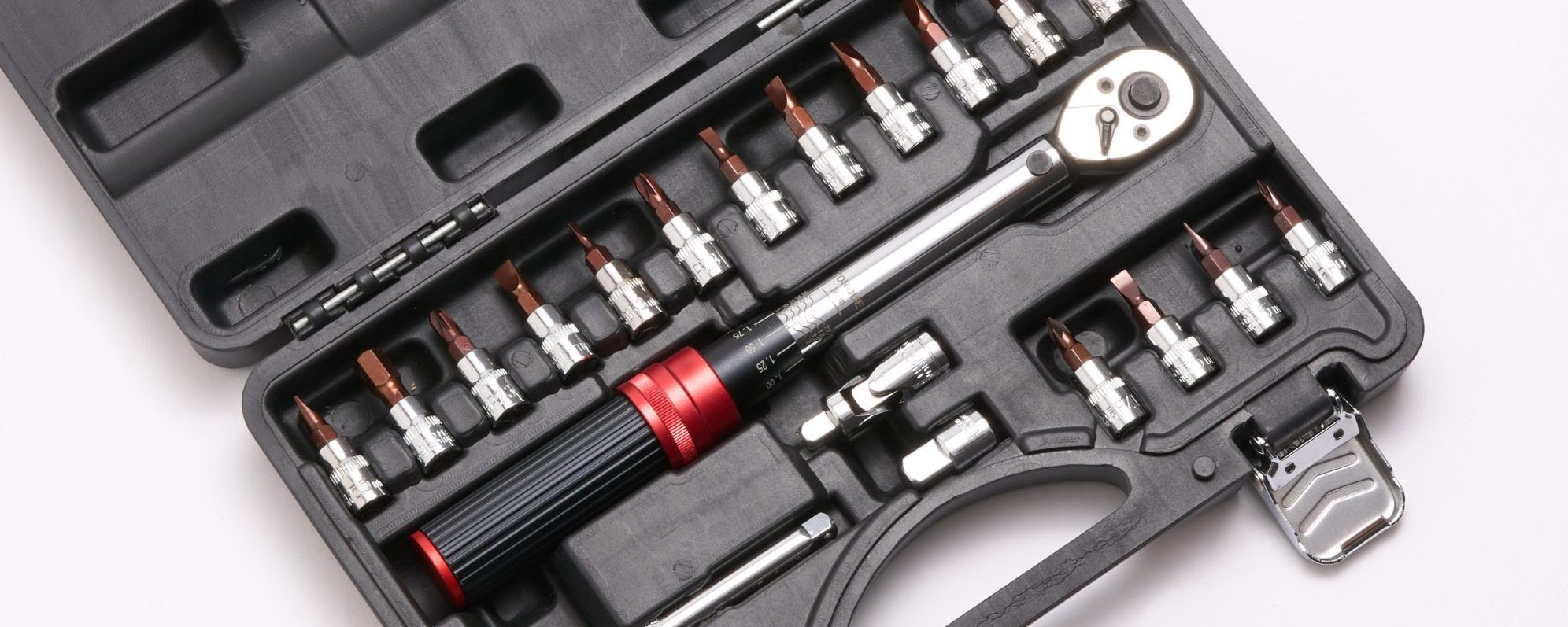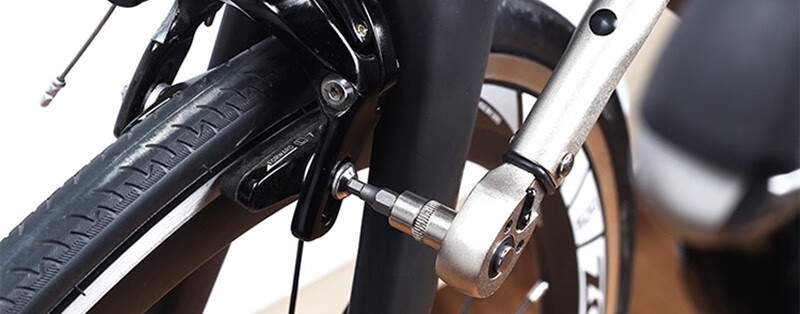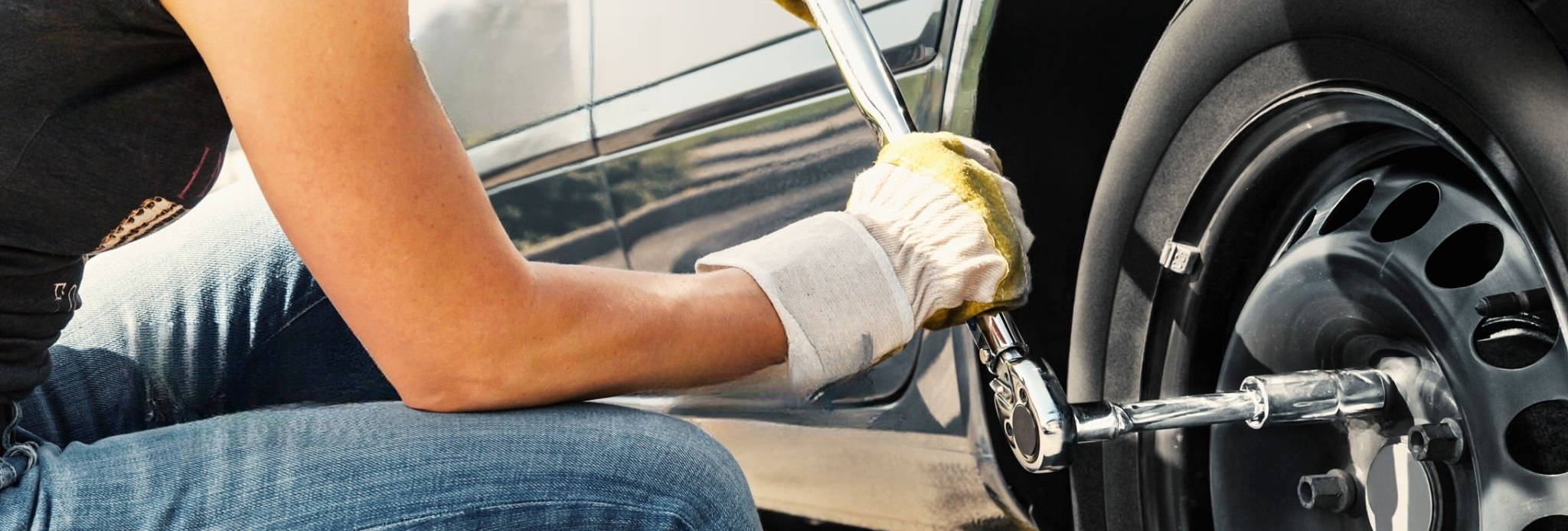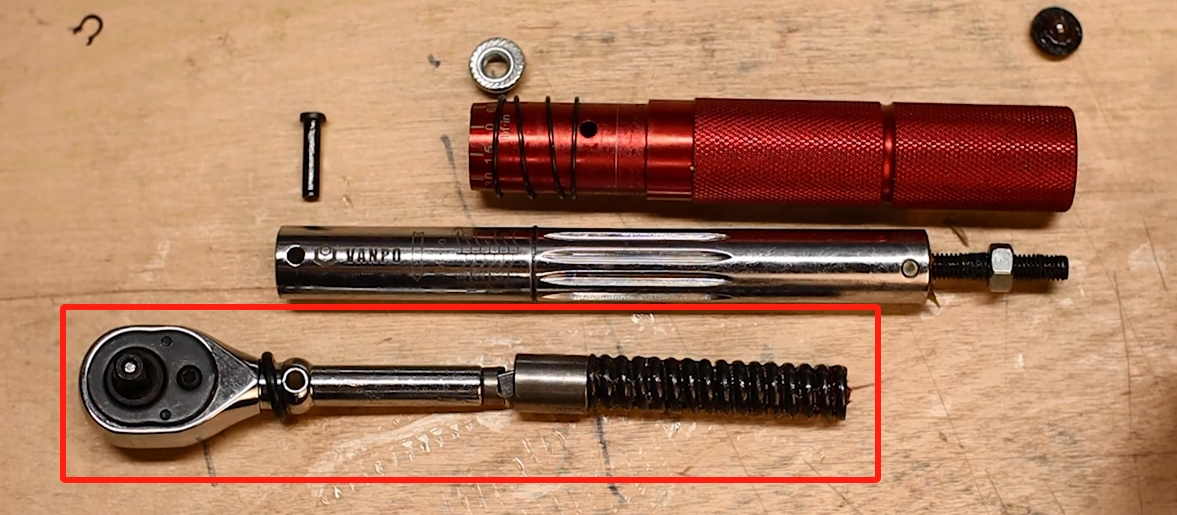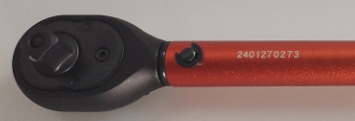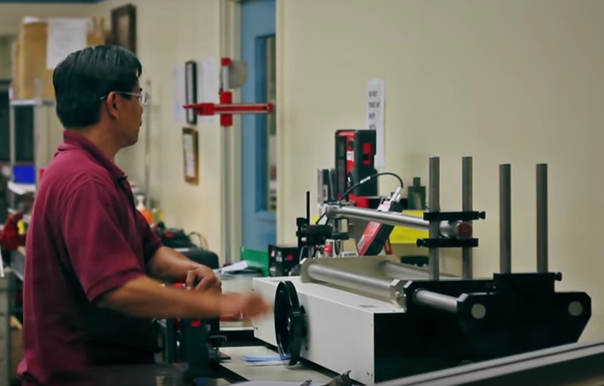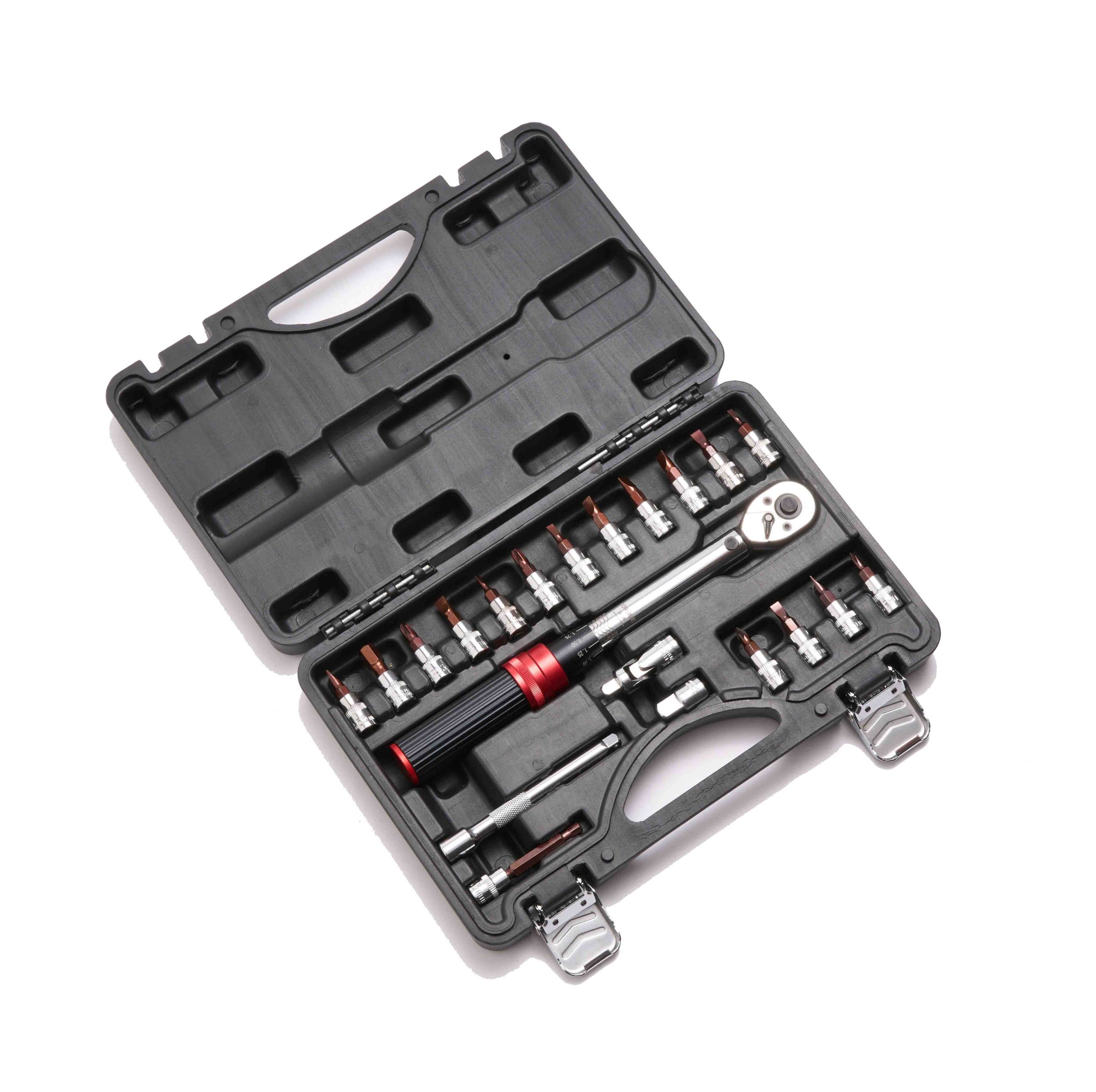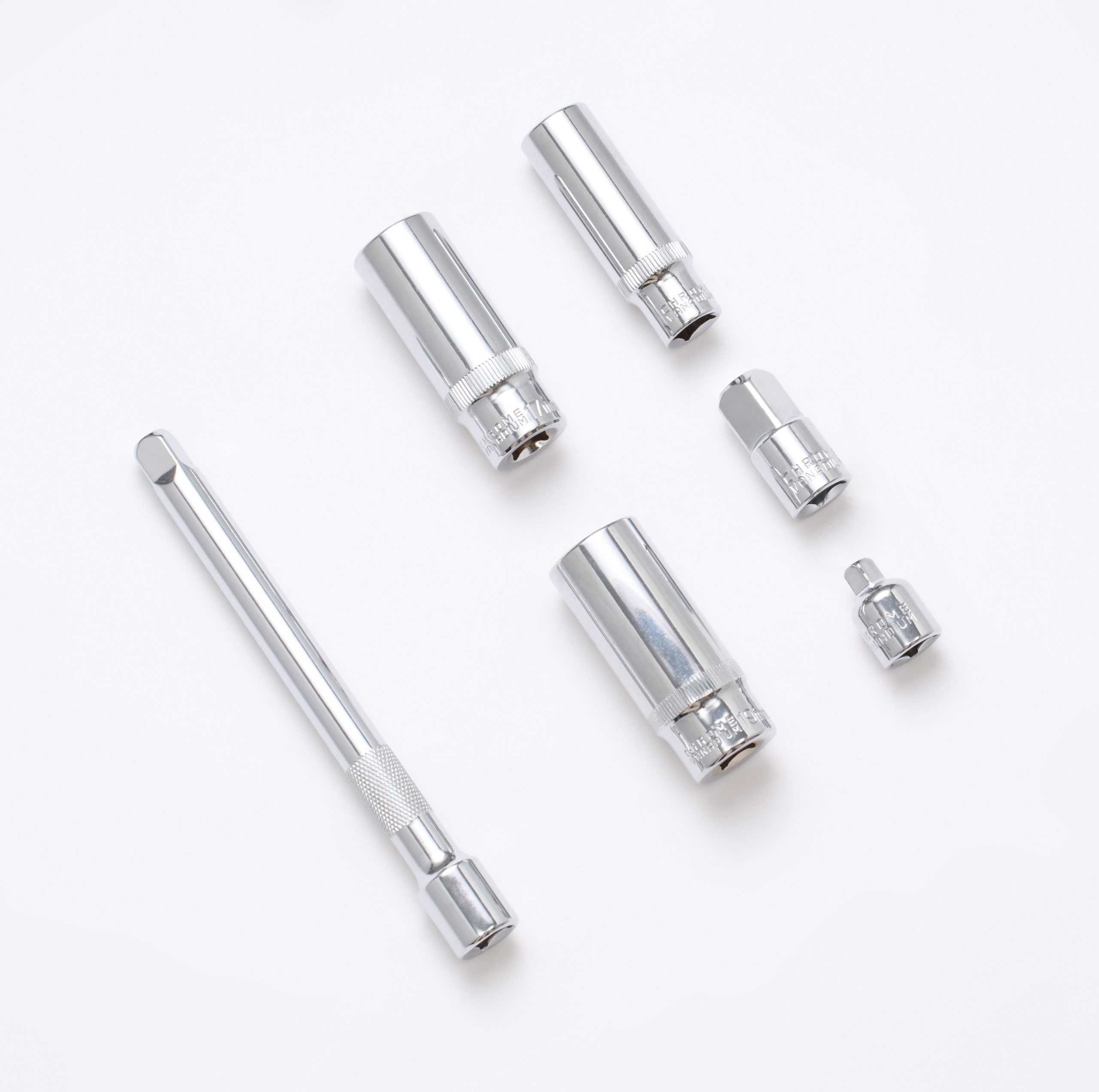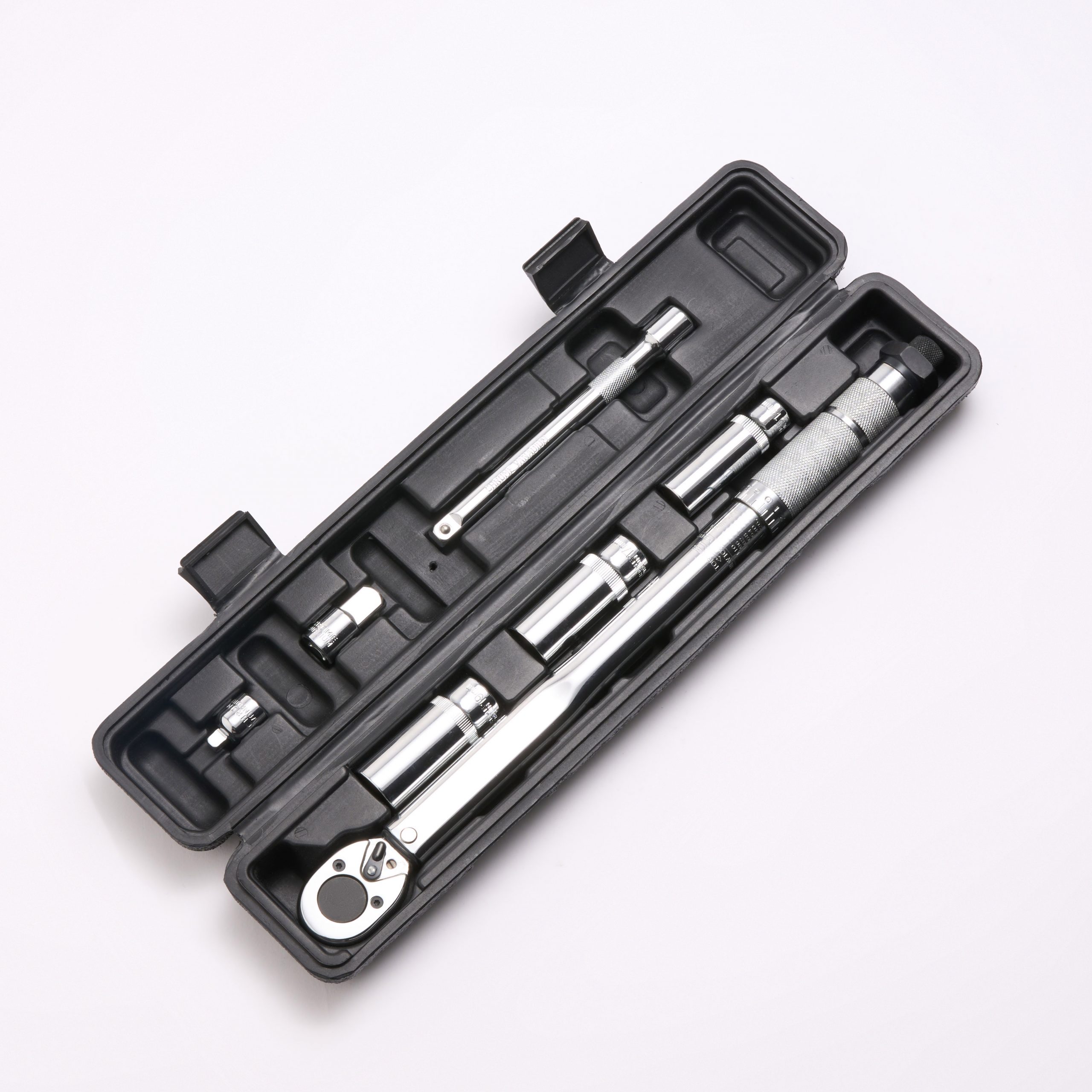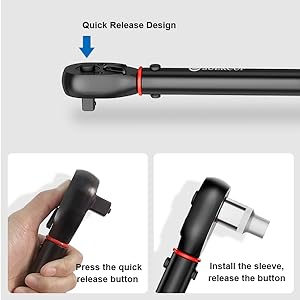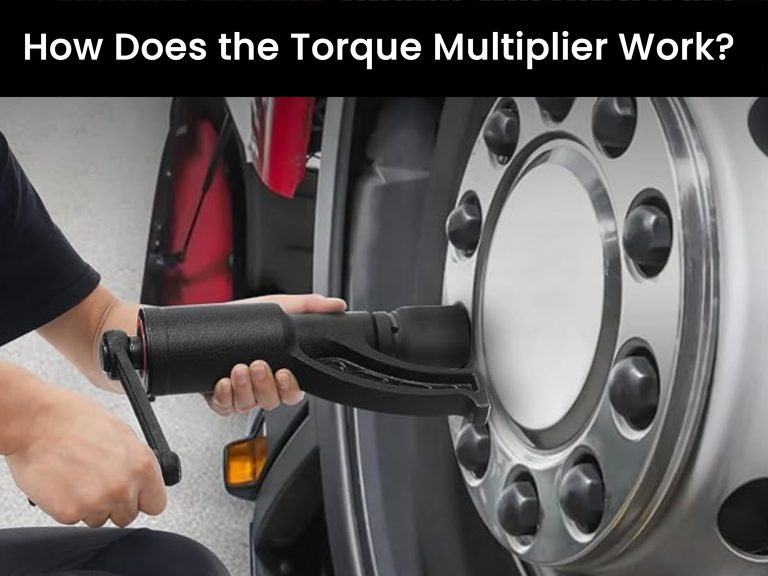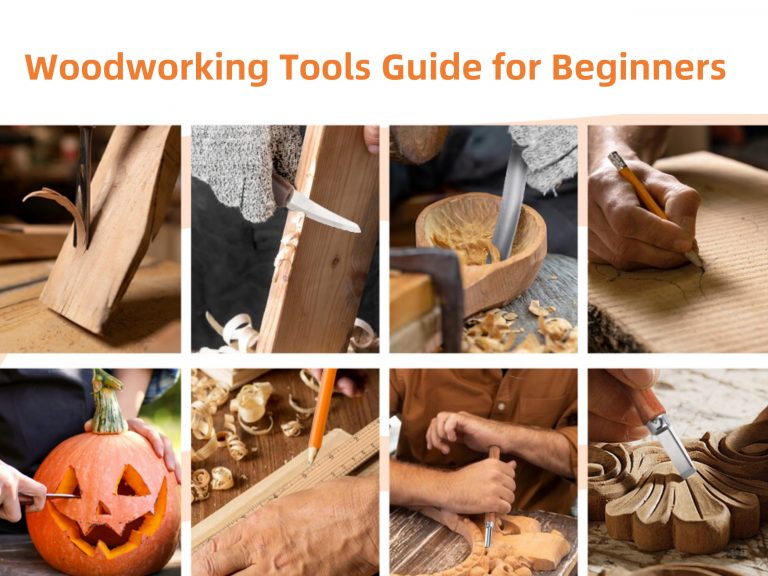What is a torque wrench?
The torque wrench is often used for repairing bicycles, motorcycles, and cars. It is a specialized tool used to apply a specific amount of torque to a fastener, such as a bolt or a nut. It is essential for tasks that require precise tightening to ensure that the fastener is neither under-tightened nor over-tightened. Torque wrenches come in several types, including click-type, beam-type, and digital torque wrenches, each with its own advantages and applications. The metals used to manufacture torque wrenches are usually chromium vanadium steel, carbon steel, and aluminum alloy.
The Structure of a Click-type Torque Wrench
One of the main components of a torque wrench is the handle, which provides the user with a grip to hold and maneuver the tool. The handle is typically made of a durable material, such as metal or composite, to withstand the forces applied during use.
Connected to the handle is the lock of the torque wrench, which houses the mechanism that allows the user to set the desired torque value. This mechanism often includes a scale, which indicates the amount of torque being applied, and a handle or knob that can be turned to adjust the settings. The unit of scale can be Newton meter (N.m) or foot round (ft-lbs). The accuracy of torque size can be achieved by Myway within 3%.
The head of the torque wrench also features a ratcheting mechanism, which allows the user to apply torque in a specific direction without having to reset the tool. You can swing the switch to adjust the direction of the wrench’s force application. This feature is particularly useful when working in tight or hard-to-reach spaces.
In addition to the handle and head, a torque wrench also contains several internal components that are crucial to its operation.
One of the most important internal components is the spring-loaded mechanism, which is responsible for controlling the amount of torque applied to the fastener. When the user sets the desired torque value using the scale and handle on the head of the wrench, this mechanism ensures that the tool will click or release when the set torque is reached, preventing over-tightening.
Another key component of a torque wrench is the drive mechanism, which is the part of the tool that physically engages with the fastener. This mechanism typically consists of a square drive and a socket attachment that allows the wrench to be used with a variety of fastener sizes and types. Common drive sizes include 1/4 “(commonly used for bicycles), 3/8″ (commonly used for motorcycles), 1/2 “(commonly used for cars), 3/4″, and 1″
The final crucial component of a torque wrench is the calibration mechanism, which ensures that the tool is accurately applying the specified amount of torque. This mechanism can typically be adjusted or re-calibrated as needed to maintain the tool’s precision over time.
Overall, a torque wrench is a complex tool with many components that work together to achieve precise torque application. A high-quality torque wrench requires exceptional manufacturing capabilities. Myway is a top tool manufacturer in China, providing customized services for each part of a torque wrench, and collaborating with many emerging Amazon sellers and large tool supermarkets.
If you want to know more details about how torque wrenches work, please browse the video below
How do I use a torque wrench to repair a car?
Using a torque wrench to repair a car involves following a few simple steps to ensure the correct tightening of fasteners. First, it is essential to identify the specific torque value recommended for the fastener being tightened. This information can typically be found in the car’s service manual or obtained from the manufacturer. Once the torque value is known, the torque wrench can be set to the appropriate setting by adjusting the handle or digital display. When tightening the fastener, the torque wrench will indicate when the desired torque has been reached, at which point the user should stop applying force to prevent over-tightening.
What are the sockets used in torque wrenchs?
A socket is a tool used to turn a fastener, such as a bolt or nut, by fitting over the fastener and providing a means to apply torque. Sockets come in various sizes and are often used in conjunction with a ratchet or a torque wrench to tighten or loosen fasteners quickly and efficiently.
When it comes to torque wrenches, the specifications of the sockets are essential to ensure a proper fit and prevent damage to the tool or the fastener being tightened. The most common type of socket used for torque wrenches is the impact socket, which is designed to withstand the high torque and impact forces generated by a torque wrench. These sockets are made from high-strength chromium vanadium steel. When selecting impact sockets for your torque wrench, make sure to choose the correct size and drive (e.g., 1/4-inch, 3/8-inch, 1/2-inch) to match the torque wrench being used.
For bicycle repair, bit sockets are indispensable for removing and installing different types of fasteners commonly found on bicycles. Bit sockets, also known as hex sockets, feature a hexagonal-shaped opening that allows them to fit onto hexagonal bolts and screws commonly used in bicycle components. Additionally, bit sockets come in various sizes to accommodate different bolt sizes. When working on a bicycle, it’s essential to have a set of bit sockets in commonly used sizes, such as 4mm, 5mm, and 6mm, to ensure that you have the right tool for the job.
In the context of car repair, having the right sockets is essential for tackling a wide range of tasks, from basic maintenance to more complex repairs. For general automotive repairs, a set of standard and deep sockets in both metric and SAE (imperial) sizes is essential. These sockets are typically used for tasks such as removing and installing nuts, bolts, and other fasteners found in various automotive components. Additionally, specialized sockets such as spark plug sockets and wheel nut sockets are also essential for specific car repair tasks. When working on a car, it’s important to have a diverse range of sockets to ensure that you have the right tool for any job that comes your way.
How to use the socket on a torque wrench
When using a socket with a torque wrench, it is essential to ensure a proper fit between the two tools to avoid slippage or damage to the fastener. To use a socket on a torque wrench, simply insert the square drive of the torque wrench into the socket and engage the locking mechanism, if applicable. The socket can then be placed over the fastener, and the torque wrench can be used to apply the specified amount of torque to tighten or loosen the fastener as needed. It is important to use the correct size and type of socket for the fastener to ensure a secure and accurate connection between the torque wrench and the fastener.
Conclusion
Torque wrench is an essential tool for maintaining and repairing cars, providing the ability to apply precise torque to fasteners to ensure proper tightening. When combined with a socket, the torque wrench becomes even more versatile, allowing for efficient and accurate fastener tightening and loosening. By understanding what a torque wrench is, how to use it to repair a car, and how to use it with a socket, you can ensure that your automotive repair and maintenance tasks are completed safely and effectively.

